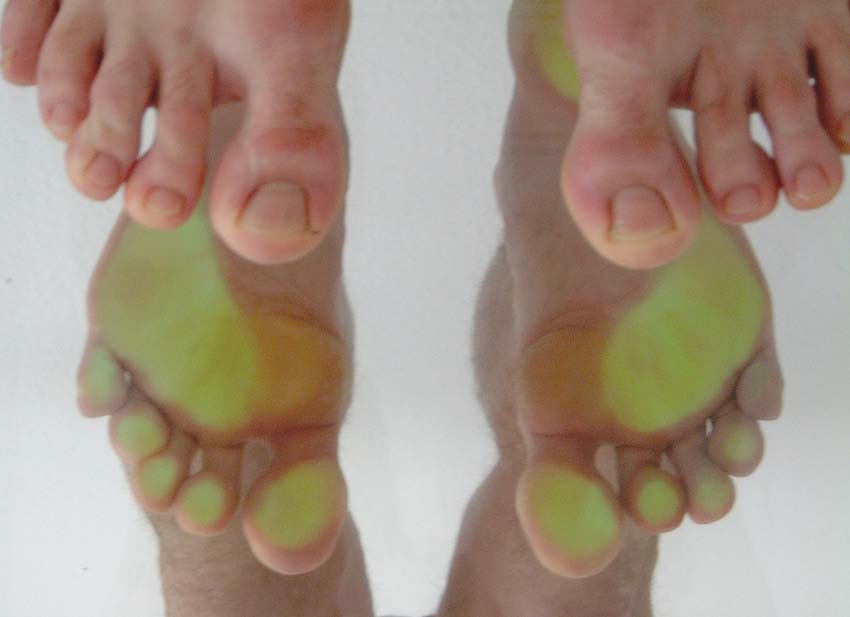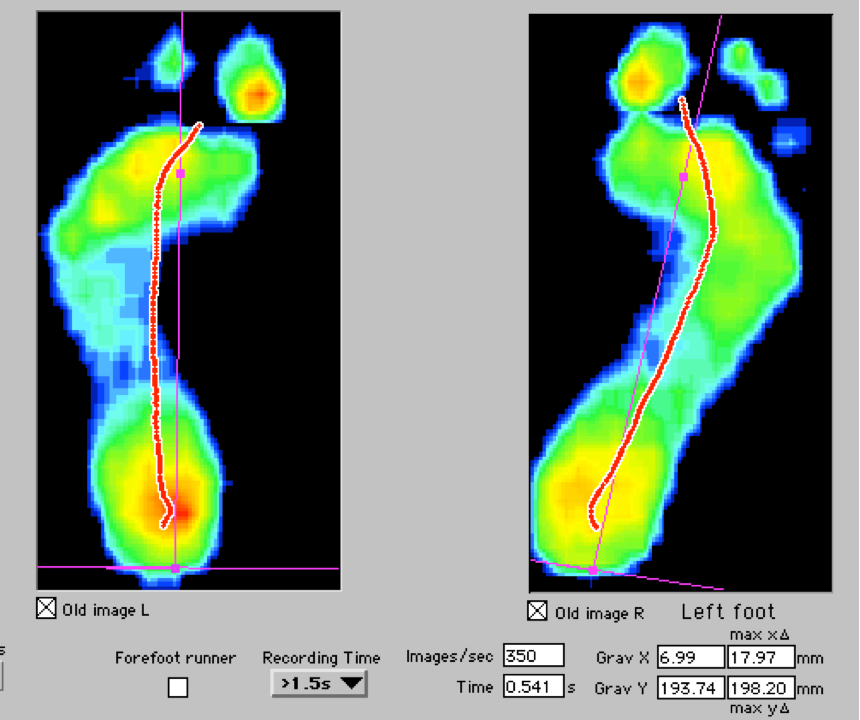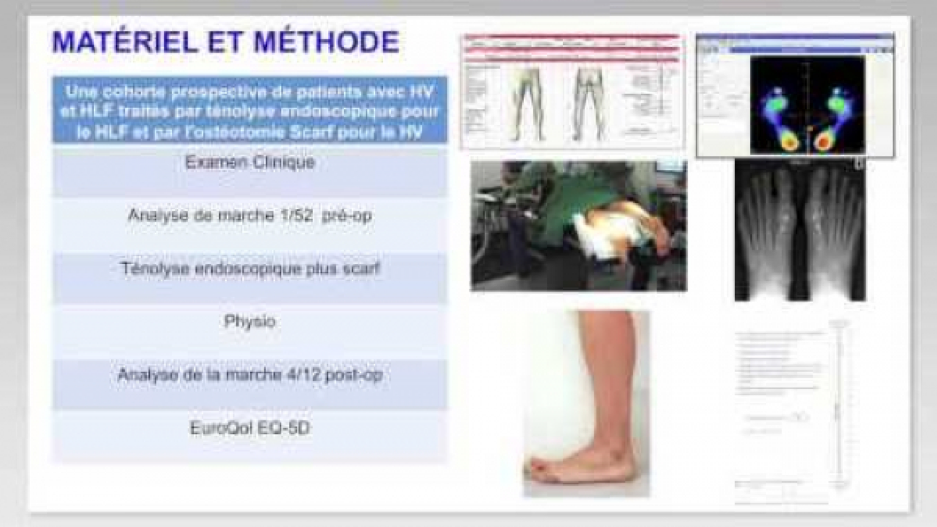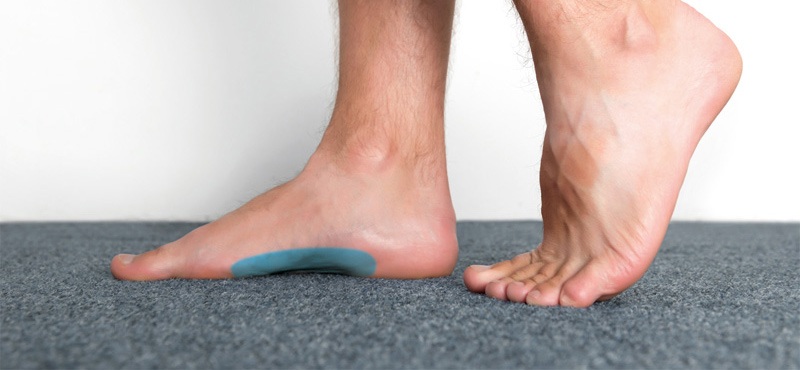The footprint is in a way the signature of the functioning of foot and balance. The footprint on the ground is an instant signature that allows us to extrapolate the positioning of the upper body to be in balance. This deduction is possible thanks to the interarticular synchronism present during movement. The knees, hips and back closely depend on the position of the foot.

The podoscopic assessment is carried out on a transparent plan with backlighting which highlights the points of support. In this image, we can see the lack of support under the head of the 1st metatarsal. It is an often present and pathognomonic sign of FLH. We can also note the "snowshoe" aspect of the hallux which shows significant mechanical stress due to the transfer of the load on this toe.

The podiatry assessment carried out on a mat equipped with ultra-sensitive sensors includes a static analysis based on both feet first, then on one foot, and lastly, a dynamic gait analysis. In the case of FLH, the static imprint shows a shift in the projection of the center of gravity rearward and onto the outer side of the foot. In dynamics, that is to say when walking, the attack and the progress of the walk are deported to the outer edge of the foot in the case of FLH. There is also a time lag during the transition from supination to pronation accompanied by a sudden tilting of the foot inward at the end of the stance phase. Finally, a hyper-support under the pulp of the big toe and an absence of support under the head of M1 are systematically found.
Learn more
 Global therapeutic approach and contributions of podiatry
Global therapeutic approach and contributions of podiatry  Walking and functional report - interest
Walking and functional report - interest  Report and analysis of the walk
Report and analysis of the walk FHL WORKSHOPS 2016 – FOOTWEAR WORKSHOP
FHL WORKSHOPS 2016 - PODOLOGY AND OCCUPATIONAL THERAPY WORKSHOP
 EN
EN  DE
DE  ES
ES  FR
FR 